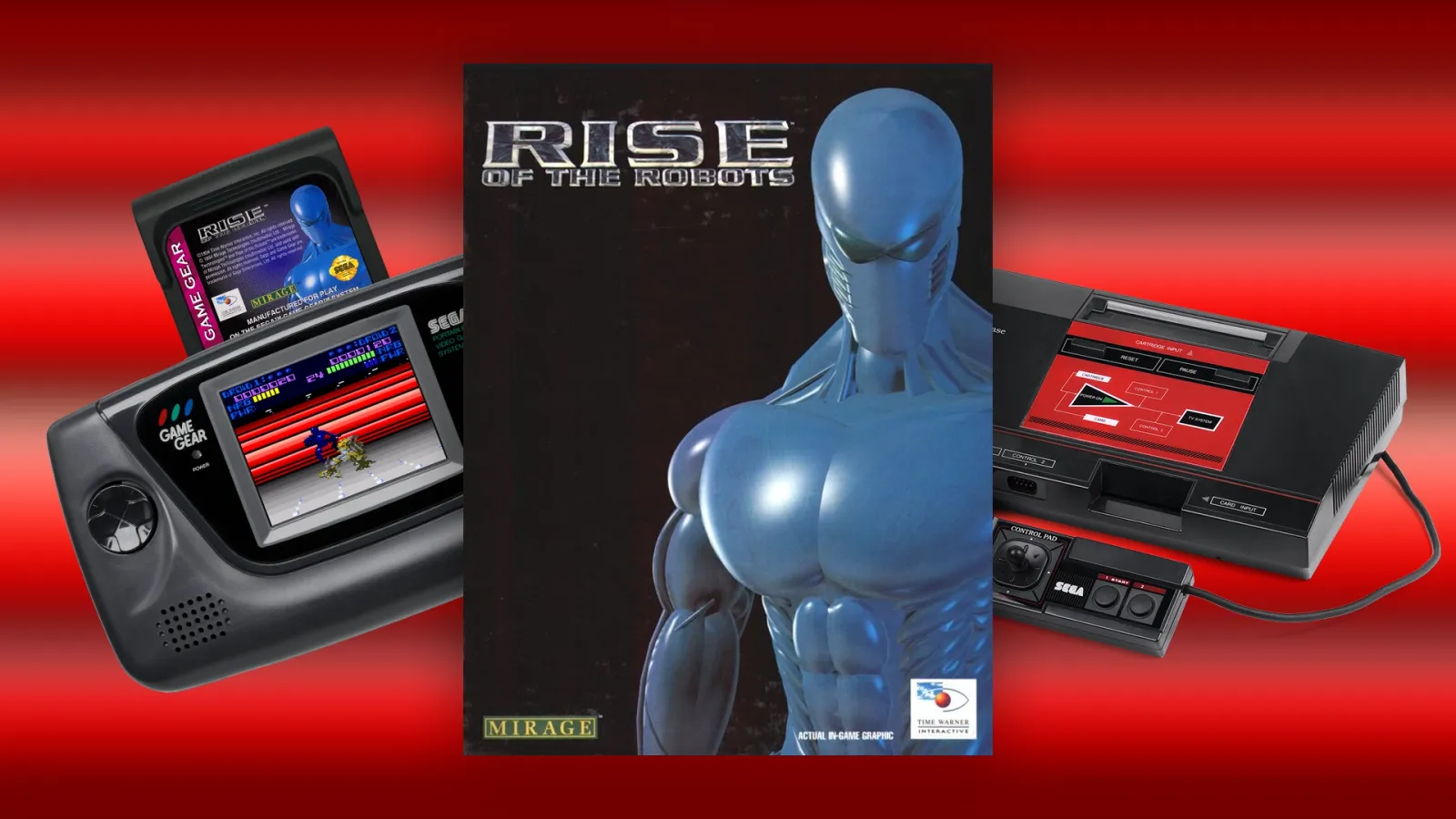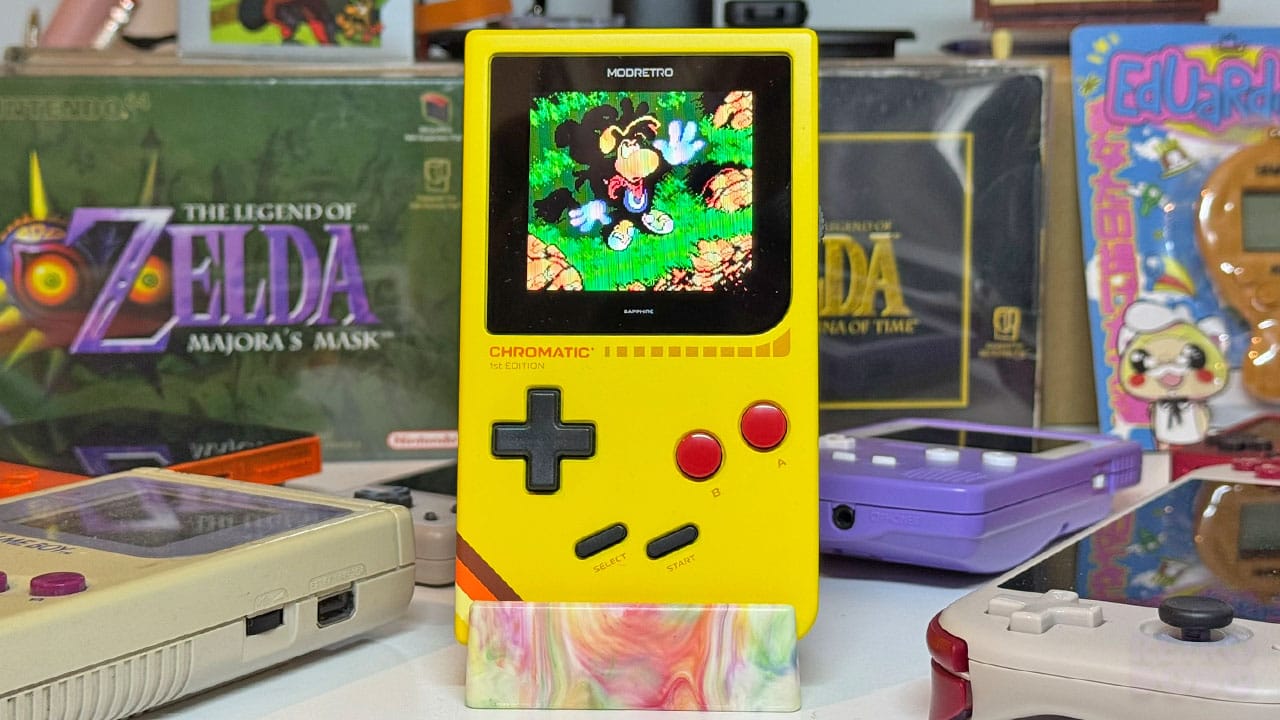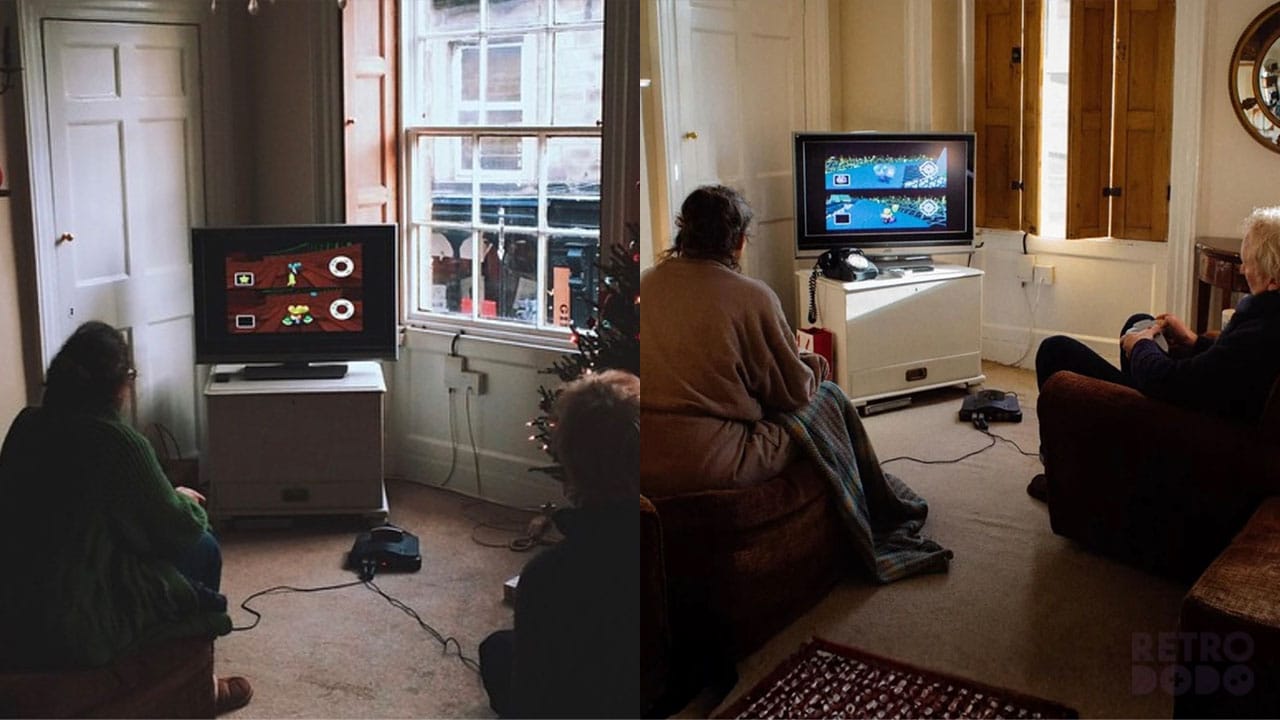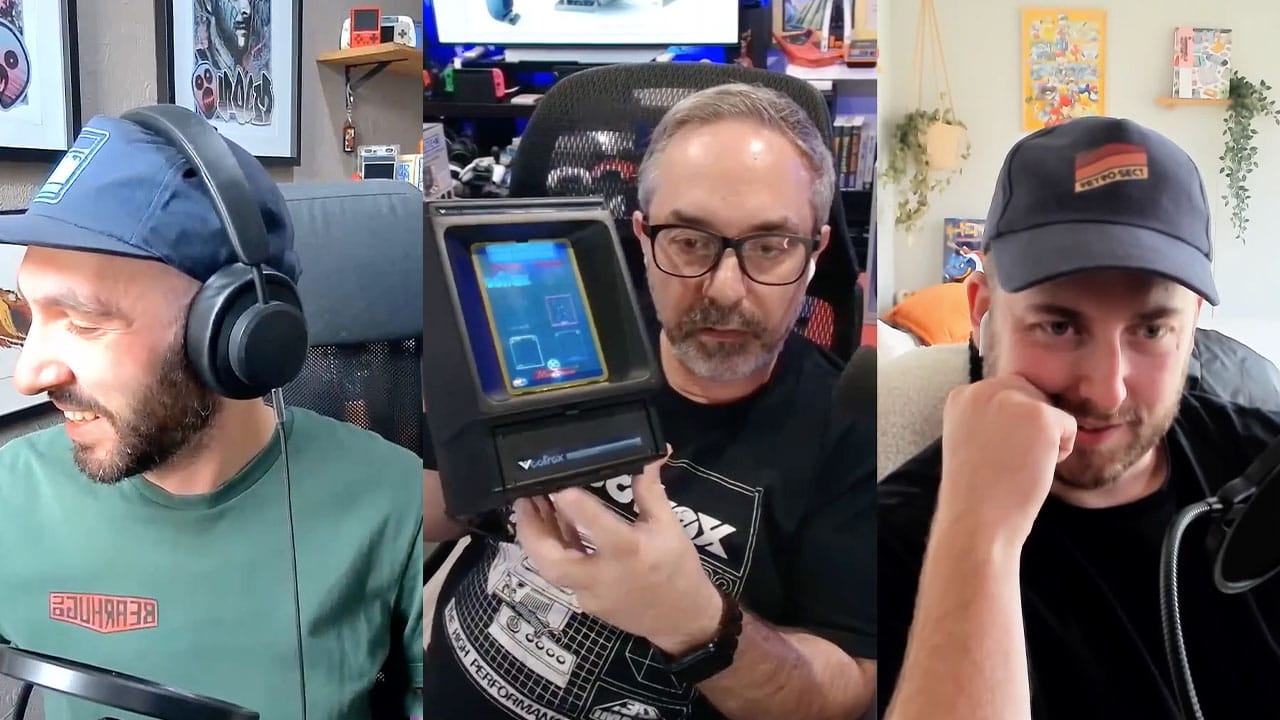One wintry day in November of 1993, I wandered into WHSmith and spotted a striking magazine cover. Future's EDGE magazine was still in its infancy, but it was already garnering a reputation for high-brow industry comments mixed with interviews and a penchant for new technology.
Rise Of The Robots was right up its dystopian, neon-infused street.
"Graphics to die for! Who cares about the gameplay when it looks this good?" the cover line boldly declared, the game's sleek robot punching out of the image. Inside, the technical wizardry behind the Mirage game enthralled EDGE's journalists, from the rendering of its various metallic combatants to the – apparently – advanced artificial intelligence driving their moves.
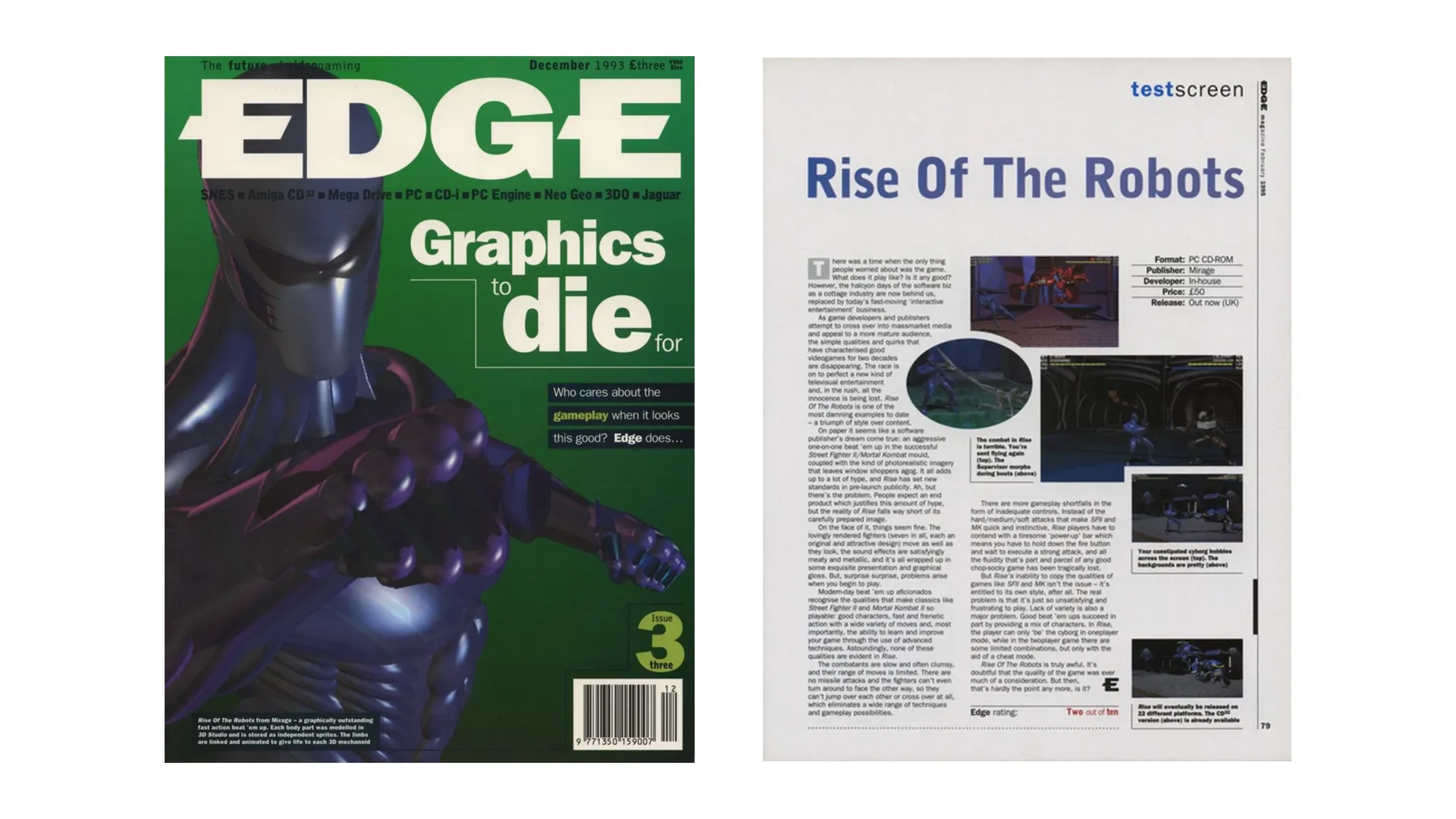
You know the rest of the story. PR spin and Rise Of The Robots' glossy screens duped EDGE. Over a year later, it finally reviewed the PC version, awarding it a derisory two out of ten. With the SEGA Saturn game Virtua Fighter glowingly reviewed in the same issue, Rise Of The Robots didn't even look that impressive anymore.
Snuggled away at the bottom right of the EDGE review was a screenshot of the Amiga CD32 version. "Rise will eventually be released on 22 different platforms", noted the caption chillingly. Incredibly, one of those platforms was the Game Gear, SEGA's four-year-old eight-bit handheld. With a fraction of the power available to modern PCs and the Amiga, this abridged version of Rise Of The Robots would have to rely on its gameplay.
Oh dear.
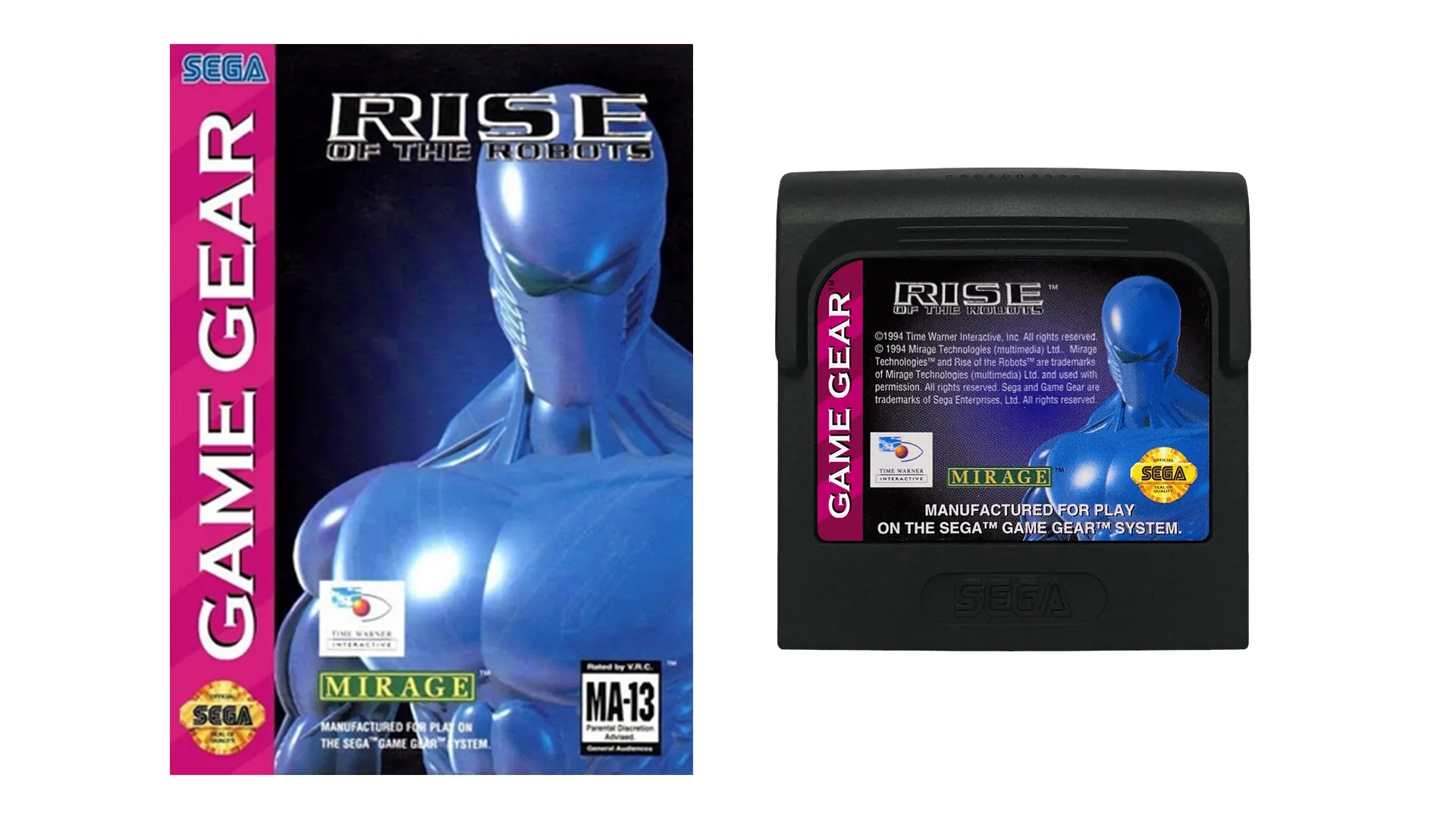
ZX Spectrum fans, in particular, should recognise the name Clive Townsend. During the previous decade, Clive hit big with his ninja-James Bond hybrid series Saboteur for Somerset-based publisher Durell. Following Durell's exit from the games industry in the late Eighties, Clive answered an advert looking for a games programmer. The company was Data Design, one of several developers specialising in conversion work, often to handheld platforms.
"They wanted a coder for James Pond II: Robocod on the Game Boy," he explains. "It used a Z80 processor, so it wasn't a huge leap from the Spectrum." After delivering the sequel conversion, Clive began working full-time at Data Design.

Together with his artist partner, Marcus Russell, the pair gained a reputation for an efficient work ethic. "We were working ridiculous hours at Data Design," frowns Marcus. "Some one hundred plus hours per week for an extended time. But our working relationship was amazing. We'd watch the boss say goodbye most evenings, then sleep under our desks." In 1993, a new challenge arrived for Clive and Marcus: Data Design got the Rise Of The Robots gig across a set of lower-spec machines with a razor-sharp deadline.
Now was the ultimate test for the under-desk sleepers: squeeze the advanced PC game to the Game Gear's 256K capacity cartridge and Master System without sacrificing too much of its display and – cough – gameplay.
It wasn't the pair's first brush with Rise. "At one ECTS [European Computer Trade Show], we visited the Rise Of The Robots stand," says Clive in his book, The Saboteur Story.
"The people running it had absolutely no idea what they were doing. Trippa [Marcus] asked if the final version would have the purple outlines. Instead of saying no, it's not finished, the rep said, 'Yes, yes – it will ALL be in there!'"
Back to Data Design, and Marcus Russell. "We were sent graphics and audio files and a number of data tables for enemy AI," he recalls. Even at this early stage, the challenge ahead was evident. "One enemy data table alone utilised more memory storage than we had for the entire game! We did grin about that…"
I'm not sure I'd be grinning; that 256K data table housed the enemy AI – primarily, how the robots would react to the player's moves. "We'd have to include AI for every robot, and also graphics, code, data and sound," noted Clive in The Saboteur Story. "But that wasn't the first problem…"
One of the significant issues for any handheld conversion in the Nineties was screen size and availability of sprites. Rise Of The Robots, with its oversized combatants, presented a particular challenge, as Clive laments in his book. "Due to the width of the robots on the screen, it took every single sprite available (per scanline) to draw just ONE robot." Clearly, a one-robot game would be even more boring than the PC original, although not by much.

Clive and Marcus's solution was ingenious, as the latter explains: "To overcome the lack of sprites when viewed horizontally with an enemy, we redefined the background characters to present a pseudo-sprite. It was technically wonderful." Elsewhere, the pair extensively utilised interrupts – suspending the processor's current process to execute a function or interrupt – to permit vertical sprites and change the background colour to add at least a modicum of variety.
"Even though we made the lines animate, pulsate and rotate… it was still very basic," recounts Clive. "But we'd finally managed to create some rudimentary backgrounds."
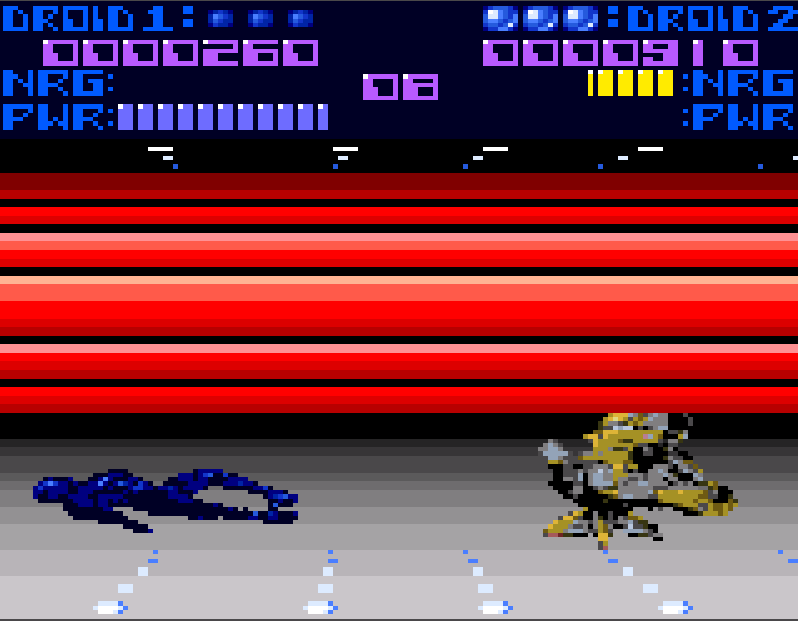
Rise Of The Robots was quickly getting crushed and pummelled into the Game Gear, with no room left for AI beyond a rudimentary set of instructions.
Explains Clive in his book, "With extra memory, we could have had better AI and flipped the graphics so the robots could turn. Probably nice backgrounds too. But unfortunately, all the memory had been used, and development time had run out."
With all this pained optimisation and technical trickery in mind, you're probably thinking, why did they bother with the flashy but totally unnecessary animated cut scenes? "Well… at the last minute, after the game was finished, the day before it was due to be delivered… we were told that we COULD have a 512K cart after all," bemoans Clive in The Saboteur Story. Marcus Russell grimaces when I ask his thoughts on this turn of events: "I shall refrain from commenting on the grounds it may incriminate me."

Upon release, the PC original of Rise Of The Robots received some eyebrow-raising reviews. Computer & Video Games, in particular, awarded the Mirage game 91%, although most magazines weren't as generous. Getting the Game Gear version out quickly was undoubtedly an attempt at damage limitation, but it didn't work: the reviews that did appear – most of the UK mags had dropped Game Gear content by 1995 – were poor.
"If we'd had more time, we would have designed the game to utilise the system's benefits," notes Marcus. "But alas, we were given little leeway and a ridiculously tight development window."
But what of the Master System game? It’s curious that Mirage commissioned this version at all – there can hardly have been a queue of Master System owners clamouring to play a watered-down version of Rise Of The Robots.

With the Game Gear port sharing code, Clive and Marcus likely completed a fair portion of the game and maybe even submitted it. "Most [of our] projects were completed," says Clive in The Saboteur Story, "even if they weren't all published for some undisclosed reason."
The mystery of Master System Rise Of The Robots continues, although it's most likely it was quietly abandoned. After all, by late 1995, even the Master System's 16-bit successor, the Mega Drive, was starting to look creaky in the face of the fancy new Sony PlayStation and Sega's own 32-bit console, the Saturn.
Today, both Clive and Marcus appreciate their minor role in a significant chapter of video game history. Notes the latter, "I initially looked back with regret – but now with amusement. The game was massively hyped, and I'd hate to think that continued on to the lower-spec versions. It feels almost criminal."
For those of us taken in by Rise Of The Robots, it’s a valid conclusion.
My thanks to Marcus Russell and Clive Townsend for their time.


